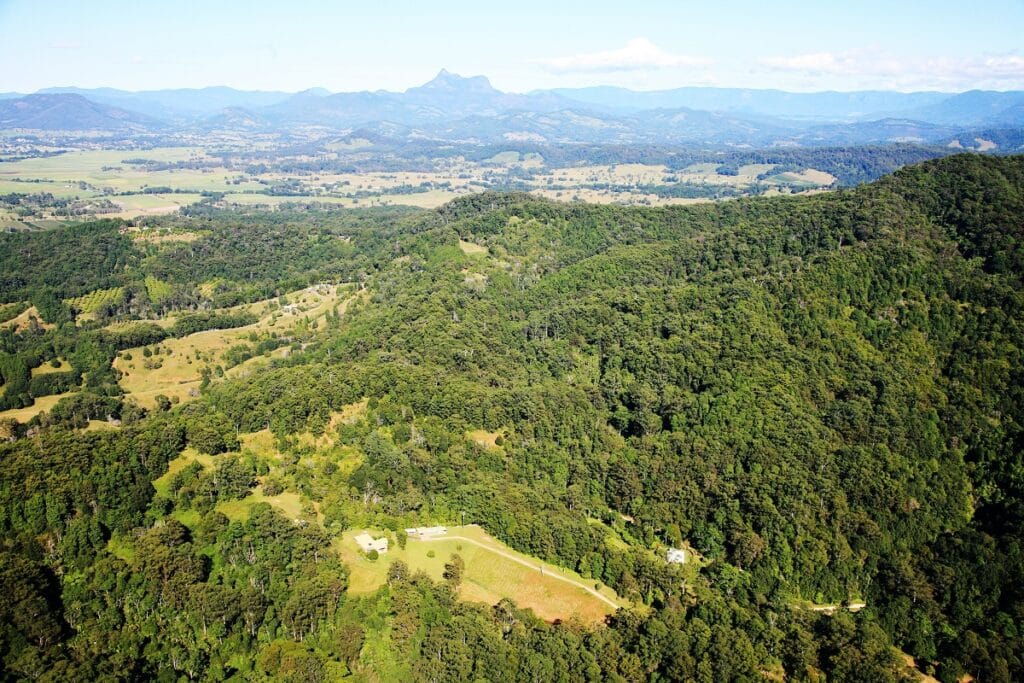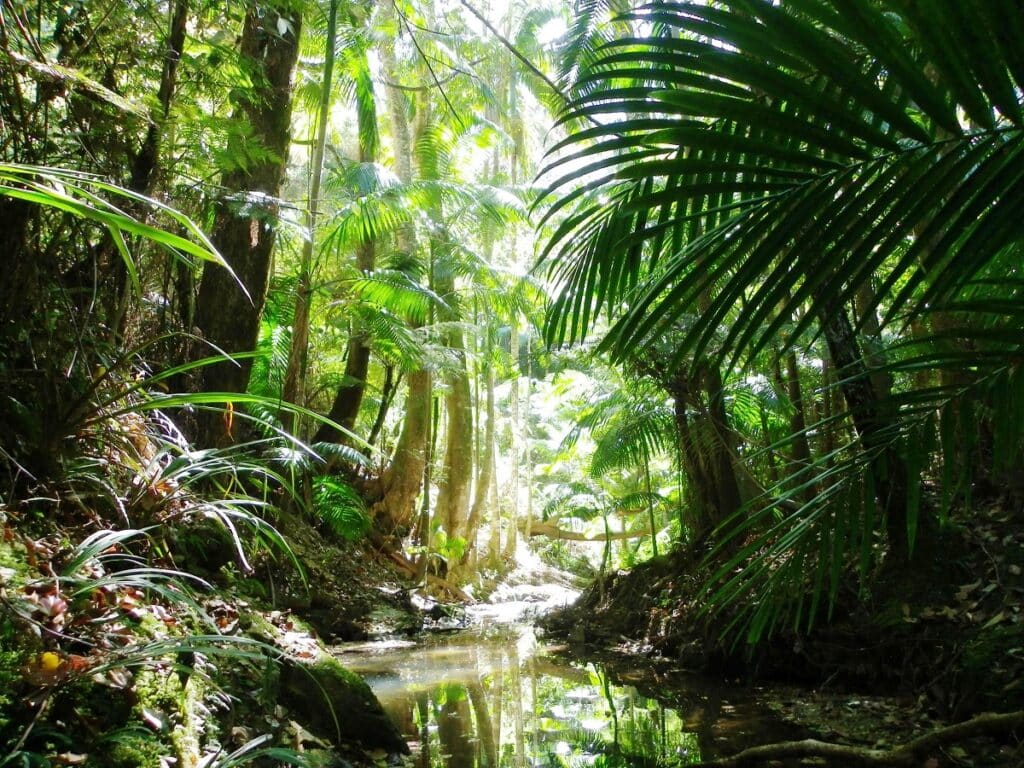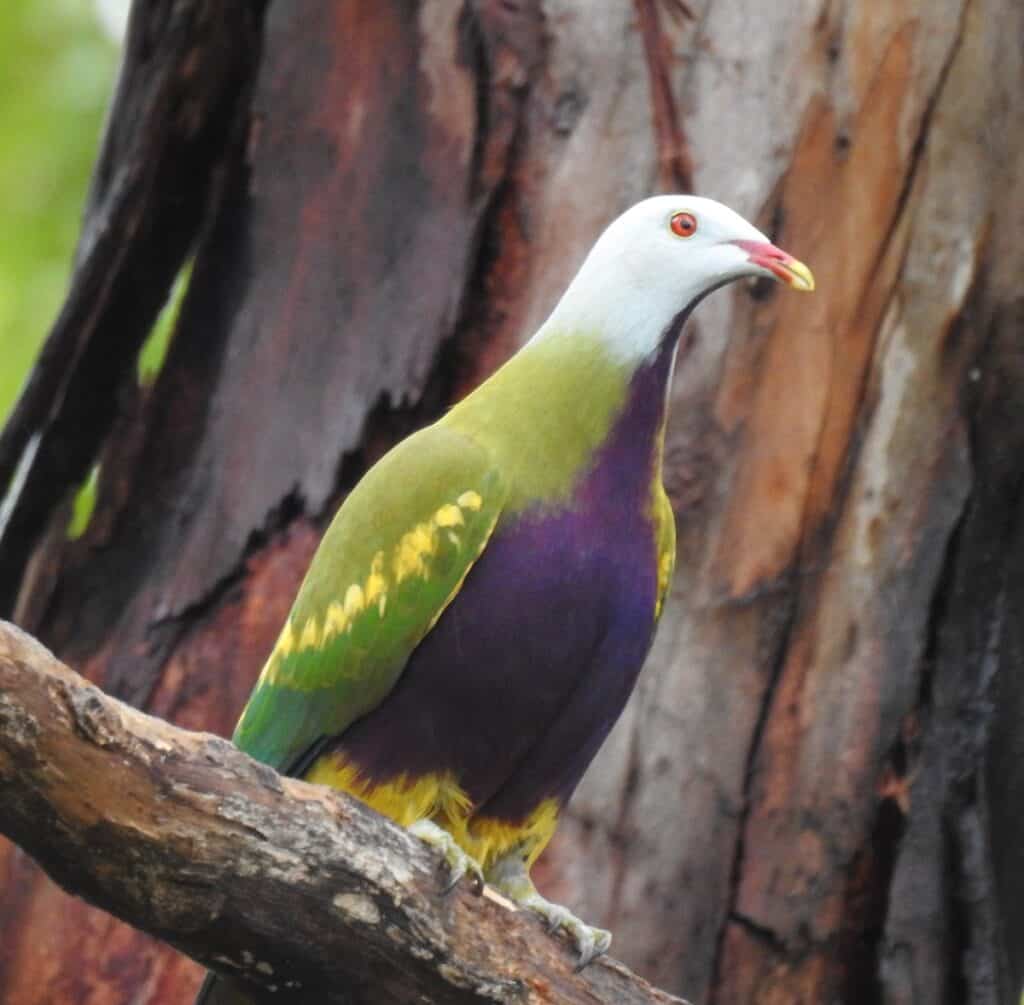Ron and Sandra Clark are the owners of Urliup Wildlife Sanctuary, a property located in the Tweed Caldera, the world’s second largest extinct volcano crater, approximately 10km north of Murwillumbah. The property is a home and dedicated wildlife sanctuary, and it is Ron and Sandra’s intent for it to remain solely for habitat and wildlife protection.
The sanctuary covers 42.3 hectares, of which approximately 36.07 hectares is remnant vegetation mapped as very high or high ecological status as per the Tweed Vegetation Management Strategy, 2004. A diversity of vegetation communities including subtropical rainforest and both wet and dry sclerophyll forests are found on Urliup Wildlife Sanctuary, with water sources being a dam and creek which runs through the property.
Vegetation species of particular note include the rainforest cassia (senna acclinis), scrub turpentine (Rhodamnia rubescens), veiny lace flower (Archidendron Muellerianum), silver leaf (Argophyllum nullumense), long-leaved tuckeroo (Cupaniopsis newmanii), Crystal Creek walnut (Endiandra floydii), black walnut (Endiandra globosa), Bennett’s ash (Flindersia bennettiana), umbrella cheese tree (Glochidion sumatranum), red bopple nut (Hicksbeachia pinnatifolia), fishbone fern (Nephrolepis cordifolia), thin-leaved condo (Planchonella chartacea), durobby (Syzygium moorei) and Gympie stinging tree (Dendrocnide moroides).
A wide range of wildlife species, including approximately 120 bird species, are known to occur on Urliup Wildlife Sanctuary, with threatened examples including Wompoo (Ptilinopus magnificus), superb (Ptilinopus superbus) and rose-crowned (Ptilinopus regina) fruit doves, red-tailed black (Calyptorhynchus banksii) and glossy black (Calyptorhynchus lathami) cockatoos, little lorikeets (Glossopsitta pusilla), marbled frogmouths (Podargus ocellatus) and barking (Ninox connivens), sooty (Tyto tenebricosa) and powerful (Ninox strenua) owls. Richmond birdwing butterflies (Ornithoptera richmondia), common planigales (Planigale maculata), and koalas (Phascolarctos cinereus) are also present on the sanctuary.















